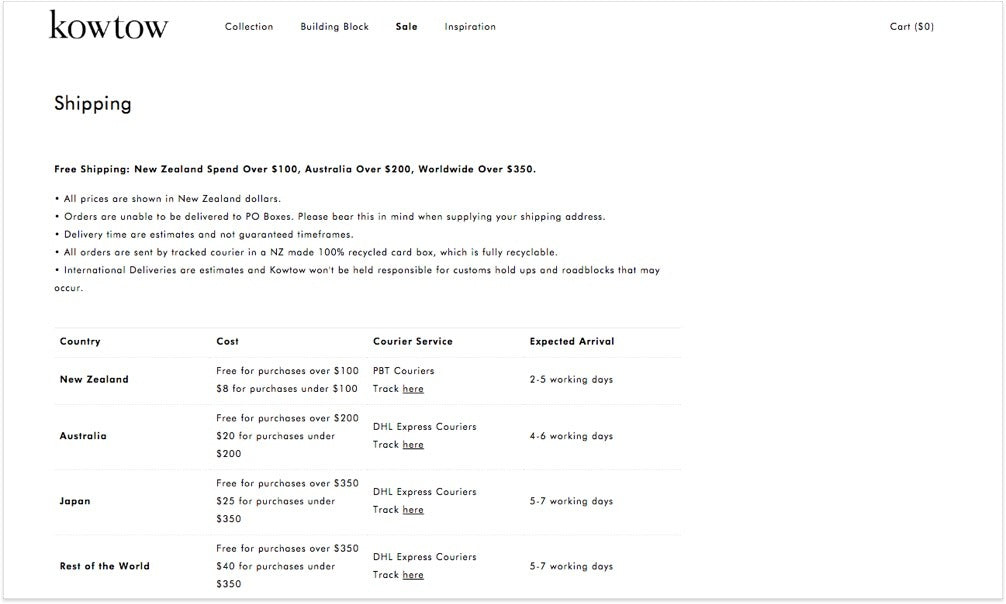
How to set the right shipping rates for your store
Here’s a scenario that might sound familiar. A new customer lands on your site, finds a product they like at a price they love, and adds it to their cart. So far, so good, right? But when they get to the checkout, they’re slapped with shipping fees, and suddenly that purchase isn’t quite the no-brainer it was a moment ago. They start to wonder—do they really want to spend that much and wait that long for something they could probably get somewhere else, cheaper and faster?
The answer, understandably, is often no, and it’s a big reason why so many potential customers bounce before paying for their purchases. In fact, according to estimates from Business Insider, high shipping costs account for a whopping 58% of all abandoned carts. Gone are the days when mail-order companies could make vague promises of “three to four weeks" and charge $9.99 for shipping. Today's customers want their orders now, and they want them shipped for free—a challenge for any merchant trying to keep within their margins.
Since the shipping rates you charge have a direct impact on your sales, it’s important take the time to know your options and choose the one that’s right for your store. In today’s post, we’ll give you the lowdown on some of the most popular shipping strategies and how you can use them for your business.
Option 1: Free shipping
We’re all suckers for a good bargain, and slapping a “free shipping” banner on your site is one of the easiest way to keep customers engaged. But is there really a way to offer customers free shipping without cutting deep into your profit margins?
On the one hand, study after study shows that free shipping boosts conversions, leading to more sales and more profits. On the other, shipping costs have risen significantly in the past few years, meaning just breaking even on free shipping can be tough. While big box stores like Zappos and Amazon (which has designs on controlling the entire value chain) can easily absorb these costs, for smaller retailers it’s a stretch.
Luckily, just because you offer free shipping doesn’t mean you have to adopt Amazon’s “all free, all the time, including returns” approach. Many retailers offer free shipping above a minimum threshold, encouraging higher order values and reducing risk. It’s also common to offer free shipping only to certain locations (like the Continental U.S.). Water bottle manufacturer Faucet Face places both these limitations on their free shipping policy, and does a great job of highlighting it by displaying a banner at the top of their site.

Determining whether to offer free shipping or require a minimum value threshold comes down to two things: what you’re selling, and how much it costs to ship. Obviously, if you run a jewelry business, it’s going to be a lot easier to absorb 100% of shipping costs than if you run a furniture business. Free shipping typically works best for retailers with smaller, lighter products; however, if you’re regularly shipping $20 bracelets in $10 priority mail envelopes, you might want to take a closer look at your profit margins.
Option 2: Real-time shipping rates
Some platforms, including Shopify, make it possible to integrate real-time shipping quotes into the checkout process. This allows you to offer more shipping options, and to charge customers almost exactly what it costs to ship their order. It works especially well for heavy, oversized items, as customers can see that they’re paying the true shipping rate and not an inflated one from your store. Here’s an example from surfboard company Mollusk, which uses a shipping calculator to estimate three different rates for their customers:

The biggest downside to using real-time shipping rates is that customers can get sticker shock when presented with rates that are significantly higher than they expected. Many non-merchants don’t realize that it can cost upwards of $15 to ship a small-to-midsize parcel these days (heck, just sending a postcard costs a couple dollars!).
On the flip side, using real-time shipping rates can help customers feel like they have some measure of control over their shipping options, rather than being forced to use the default economy option you’ve selected to keep costs down. Offering fast, trackable shipping from a reputable courier can be especially welcome for high-value items like premium jewelry and original artwork (though you’d be surprised how many people are willing to pay to be able to track the progress of everyday items).
Option 3: Flat rate shipping
If real-time shipping isn’t available to you, or if you want to avoid scaring off your customers with high fees, flat rate shipping may be a good option. This method requires a bit of preparation, as you’ll need to calculate the average shipping cost for each product, but that's something you’ll need to do anyway when your orders actually ship.
If your products vary significantly by weight or size, it’s a good idea to create a multi-tier pricing system. For example, you could charge $8 for orders under three pounds and $10 for anything over. Almost all stores also have different rates for different countries, as Kowtow Clothing demonstrates below. Note that even though orders presumably get larger and heavier as they increase in value, Kowtow incentivizes its customers by offering free shipping on orders over a minimum threshold.

While the idea behind flat rate shipping is that by going over or under the true shipping cost, everything will even out in the end, many stores actually opt to accept a certain margin of loss. For example, if the average cost for shipping an order comes out to $6.55 per order, they might charge $5.00 to make the cost more palatable to customers while still cushioning their profit margins. In fact, according to Cart66, $5.00 is the “sweet spot” for most stores—any less doesn’t win you sales, and anything over “begins to move into the sticker shock zone.”